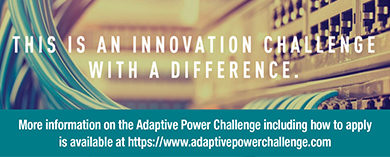Managing IoT Ecosystem Complexity
By Joe Walsh
Let’s agree that IoT is going to be big. Pick a number and put billions behind it and that is how many connected devices will be on the market by 2025. Operators see this number and think that the money will soon start to roll in faster than they can count. However, as everyone is discovering (what has been common knowledge for 10 years), the money is not in the connectivity; it is in all of the other areas of the ecosystem and unless operators act smartly, it will be hard for them to capitalize on the IoT wave.
Why now?
We have all seen the projections of the coming wave of connected devices that were supposed to hit the following year for the last five years. While trying not to be “Lucy pulling the ball away from Charlie Brown” at the last second, this time it IS different. Technology is driving digital transformation which in turn is pushing technology deployment. A few of the key technology trends are:
- New Network Options
In the past, a connected device had all the bandwidth and power requirements of a smartphone. Carriers could not (or would not) easily differentiate a smart meter needing hundreds of bytes per day from a smartphone that needed hundreds of megabytes per day. Thus, the costs of the device module and network connectivity were high.
New networks, both unlicensed LoRa, and licensed NB-IoT and Cat-M are driving down the cost of deploying IoT solutions. Module prices are sub-$5 for both solutions and continuing their march downward. These networks are designed specifically to handle large density of connected devices powered by batteries and utilizing kb-level data packages.
The lower cost and power profile are driving a new class of IoT solutions with almost disposable devices that capture a wide array of data points. Carriers have followed suit to provide flexible pricing options. Industries such as CPG are starting to leverage these trends to install sensors within retail packaging, allowing them to track performance, offer real-time customer personalization, and predict supply-chain issues.
For example, T-Mobile recently launched its NB-IoT network with pricing as low as $6 per year for up to 12 MB of data traffic. At this price point, new business models such as a consumer packaged goods company putting sensors in pop-up displays they send to retail outlets to track performance. I expect carriers to introduce bundling options to ensure stickiness with their core activities (i.e., for $5, all connected home devices included in monthly cell phone contract).
- Network Capability Enhancements
On the opposite side of the spectrum (pun somewhat intended), new network technologies driven by private networking and edge computing will increase the capabilities of networks, in turn driving up the number of connections.
The ability to stand up to private networks will be instrumental for both unlicensed and licensed technologies. Farms in rural areas with limited licensed (cellular) connectivity have adopted LoRa to ensure coverage at a reasonable cost. Coke utilized inexpensive, but reliable LoRa gateways in their distribution warehouses to capture data from delivery vehicles as they entered the facility to reload.
Edge computing is typically associated with lower latency applications such as edge augmented reality. However the lower latency provided by edge computing can mean that components traditionally required on the device can be hosted in the cloud. This combined with non-IP data delivery (NIDD) can extend battery life and reduce network traffic.
- New Technologies To Feed The Data Beast
As companies digitally transform themselves, they are beginning to realize the benefits of all the data captured to help improve operations, customer experience, employee satisfaction, and profitability. Advancements in machine learning (ML) and artificial intelligence (AI) are enabling these companies to leverage captured data to derive actionable insights. For example, video and audio-as-a-sensor are rapidly being adopted for equipment condition monitoring across a range of industries.
One laser-cutting equipment manufacturer wanted to reduce downtime for equipment caused by routine lubrication. The current process was to take the machine offline after a certain amount of usage — no matter if the machine needed lubrication or not.
To eliminate these inefficient calendar-based downtimes, the company installed microphones near machines and leveraged predictive analytics to detect noise patterns that indicated abnormal conditions needing lubrication. This eliminated unnecessary downtime from routine maintenance while still ensuring the machine was performing effectively.
Use cases will drive the market
Customers, however, are looking for end-to-end solutions and not any one of these specific technical capabilities. To develop an end-to-end solution, operators need to bring together various ecosystem components including:
- Connectivity
Operators must decide which use cases they will support given the network technologies they have deployed. While unlicensed technologies such as LoRa have had an early start, all major US operators have or are deploying NB-IoT, and the scale-effect will likely shift the ecosystem towards licensed networks. However, unlicensed technologies will remain a strong alternative, assuming they can corral ecosystem partners to spur end-to-end solution development.
Irrespective of type of network deployed, operators must make it easy for solution developers to develop, buy, sell, and maintain solutions. For example, Verizon specifically invested in ThingSpace, a web-based platform to make it easy for solution developers to create products and bring them to market.
- Devices
Core components of any IoT network are the “Things” or devices that are connected to the network. Every “Thing” generally comprises a connectivity module, some sort of sensor, and some sort of processing capability. Operators generally are not good at producing “things” and likely should not try to extend themselves in this direction.
However, operators such as AT&T have long provided contracts for certified modules to simplify development of new IoT devices. T-Mobile offers NB-IoT modules on their website at negotiated bulk rates driving the cost down to $5/module, as well as a a developer kit powered by Twilio to simplify creation of solutions.
- Analytics
Being able to capture data is only the first part of an IoT solution’s function. To be truly valuable, these solutions must be able to deliver actionable insights.
Web-scale players have been strong in this space, but many startups have developed niches as well. Pre-negotiated and integrated analytics capabilities can help developers take advantage of these while improving the network efficiency of their solutions.
- Security
As we start to develop millions of new end-points, the security risk of the IoT network becomes significant. Operators can provide built-in security functionality into their developer kits and networks to ensure end-to-end security. Developer programs are also starting to educate their communities about designing security in from concept inception.
- Sales Channel
We don’t often think about the sales channel as an ecosystem component, however, it is an important need in the IoT market. Operators’ sales channels have traditionally focused on selling connectivity and not end-to-end solutions. This limits their access to customers looking to buy vertical solutions.
Operators such as AT&T have been augmenting their sales channels to support selling of partner solutions but still have much room to capture their share of the IoT pie. They should look to have an IoT solution overlay their traditional sales and support teams.
What is an operator to do?
To fully realize larger portions of the IoT revenue pie, operators will need to develop partnering as a core competency. In general, I have seen a three-layer maturity model for operators:
- Layer 1: The developer program
Most operators have developer programs that offer documentation, APIs, and some sort of support community. Established operators provide easy onboarding of new developers and a well-documented process to bring new solutions to market. This is really the cost of entry for operators to support an IoT network.
- Layer 2: The Innovation Center
Most major Tier-1 operators have innovation centers geared towards IoT solutions. AT&T’s Foundry, launched in 2011, led the way with one focus area being IoT solutions. Sprint recently launched the IoT Factory to bring customers, developers, SIs and their partner network to develop ready-to-sell vertical solutions.
- Layer 3: Co-creation
Operators are in a relatively unique position to bring customers together with ecosystem players to co-create IoT solutions. Using design thinking to embed the voice of the customer into the rapid design/prototype/test processes, co-creation ensures that the product exiting the development process meets customer needs. Successful operators generally adopt a flexible intellectual property (IPR) policy that I describe as “what’s mine is mine; what’s yours is yours; what’s ours is ours.”
What does it all mean?
Operators must focus on end-to-end solutions to capture larger portions of the IoT market opportunity. They must identify the use cases that make sense based on their network technology, geographic reach, customer base, and sales channels.
Once use cases have been identified, operators must then identify gaps that can be filled by ecosystem players and proactively fill with qualified partners. These partnerships need to be mutually beneficial, scoped to the scale of the partners, and have clear short-term and long-term goals for each party.
Lastly, operators must leverage their central role to facilitate co-creation of new IoT end-to-end solutions and build out the sales and support channels to solve their customer’s challenges.
Joe Walsh,
Head of Business Innovation
at Ericsson’s IoT studio
Joe is the Head of Business Innovation at Ericsson’s IoT Studio. Joe is responsible for brining together Fortune 500 companies, operators, and ecosystem players to develop end-to-end IoT solutions through an open innovation process. Prior to joining the IoT Studio Joe was Managing Director at inCode, the strategy and operations consulting arm of Ericsson. His areas of expertise there included go-to-market strategies for new technologies such as 5G, private networking, and MVNOs. He also formed the Innovation Strategy practice helping operators implement open innovation centers.
shutterstock




